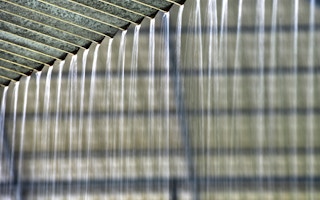The threats of climate change to the world’s water resources have never become more apparent than during this year, with record-breaking droughts in California and India to devasting floods in Bangkok and Bangladesh.
Encouragingly, many businesses and civil society organisations have recognised the urgency of managing water resources sustainably and launched new broad initiatives at the sidelines of COP21. Water is also enshrined as one of the 17 goals in the United Nation’s Sustainable Development Goals launched in September.
Here are the top five water stories in 2015:
1. Too much, too little
The year saw the clear and present danger posed by climate change on water resources, with rising sea levels and increase in ocean salinity already impacting coastal communities like Bangladesh and the Pacific Islands. Climate science studies also point out that mangroves, one of the climate adaptation measures implemented in tropical countries, may struggle to survive in rising seas.
Extreme droughts have hit Southeast Asian farmers this year, no thanks to the unusually strong onset of El Nino, a phenomenon of extremely dry weather that occurs every two to seven years. Cities like Singapore were also affected as water levels at one of its main sources in Malaysia dropped to all-time low.
A new NASA report also showed human activities are alarmingly sucking up water from the world’s underground water basin, with eight of the earth’s 37 largest aquifers classified as “overstressed”.
2. Global cooperation - watered down?
Some experts say the climate agreement signed in Paris by 196 nations this month has limited emphasis on water issues, albeit it was mentioned as a priority in adaptation and financing. Water was also referenced in the preamble of the agreement as a basic human right, which the UN has already recognised in 2010.
However, at the sidelines of the conference, governments, global businesses and non-profit organisations launched new coalitions and initiatives aimed at making water systems such as river basins, lakes and aquifers resilient to climate change. Governments and financial institutions committed US$1 billion at the “Water Resilience Focus” event under the Lima-Paris Action Agenda towards flood mitigation, improved groundwater management and irrigation practices, among others.
Meanwhile, big businesses have signed up to initiatives such as the Business Alliance for Water and Climate and #ClimateIsWater, which called for actions on water challenges to be integrated into the Paris agreement and for more companies to commit to water stewardship programmes.
3. Hydropower controversy
Hydropower is hailed by governments as a low-carbon way of meeting energy needs, especially in growing economies in Asia. China, for example, has been heavily investing in large hydropower dams to produce electricity as it moves away from coal.
However, environmental and social organisations say large dams only exacerbate climate impacts to river systems, affecting a significant food and livelihood source for many communities as well as displacing indigenous people. At Asia’s Mekong River, the controversy of dam building continues and environmental groups are vigilantly pushing for governments to stop dam projects in countries such as Laos and Cambodia.
4. Wastewater treatment: the new mega-industry
Removing chemicals and toxins in wastewater so that they can be used again or sent back safely to waterways is costly. To make water recycling more widely available, companies are finding new ways to make the process cheaper and more efficient.
This year saw several new innovations that could potentially reduce the cost and energy needed in treating wastewater. New companies are also emerging to provide alternative solutions for municipal sewage, while industry leaders continue to slash costs and improve recycling technology, even for household applications such as toilet-to-tap recycling, or shower water recycling.
On the policy front, many countries have introduced legal frameworks that support wastewater recycling. Taiwan, whose manufacturing sector is a huge water consumer, passed a bill this year facilitating the recycling and reuse of wastewater for the first time. The government plans to build six water recycling plants over the next five years.
5. Embracing rainwater harvesting
In the United Kingdom, more households and commercial establishments are seeing the value of investing in rainwater harvesting technology. A report released in early December suggests that 55 per cent of rainwater harvesting equipment suppliers are optimistic about their revenue and profits for the year, and expect more homes and buildings to install such systems over the next few years.
The Rainwater Harvesting Association of Australia conducted a study showing that applying measures such as rainwater harvesting could the government billions of dollars. Sri Lanka is investing US$675 million in a rainwater harvesting project intended for electricity production and crop irrigation.
In India’s Coimbatore, rainwater harvesting is successfully helping the city meet its water needs and authorities have built over 500 structures in the city.
This story is part of our Year in Review 2015 series, which looks at the top stories that shaped the business and sustainability scene in each of our 11 categories.





















